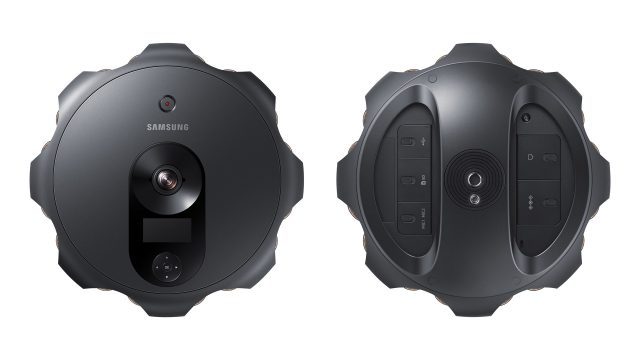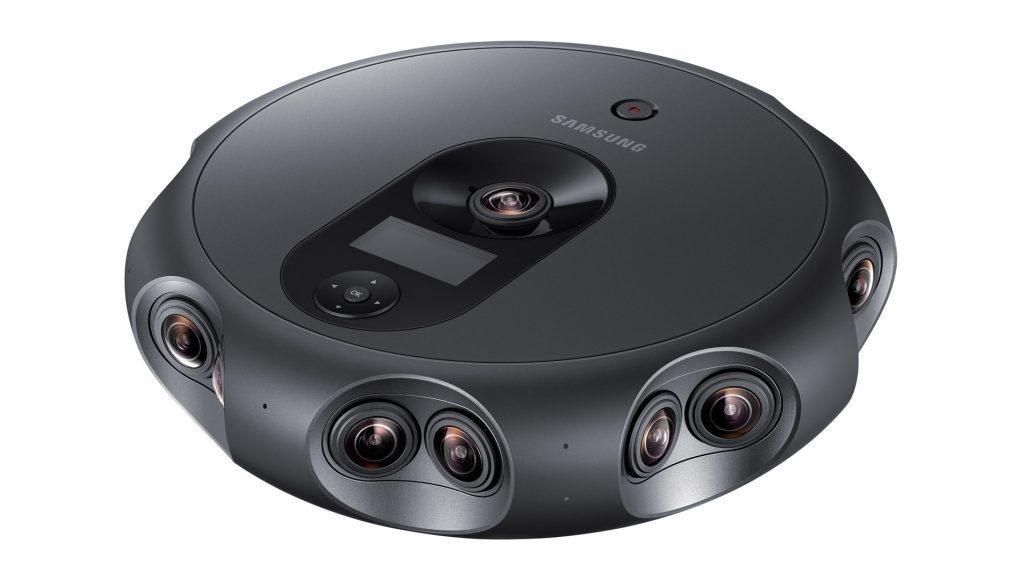Announced at the Samsung Developer conference last week, the 360 Round is the company’s new camera for creating and streaming 4K 3D content. The camera appears to be a reboot of the ‘Project Beyond’ camera that the company introduced back in 2014 but never brought to market.
A total of 17 lenses (eight stereo pairs aligned horizontal, and one centered vertical lens), and 6 internal microphones allows for capturing 3D 360 video and spatial audio. One-step stitching and control software, provided by Samsung, allows for 3D 360 livestreaming up to a claimed 4,096 × 2,048 at 30 FPS per eye. Unfortunately none of the listed video capture modes exceed 30 FPS (some consider 60 FPS a minimum quality bar for 360 video viewed through a VR headset).

Samsung says the compact uni-body design is intended to reduce heat, eliminating the need for a cooling fan, reducing weight, size, and background noise. The lenses featured in the 360 Round are IP65 rated for dust and water resistance to allow recording in adverse weather conditions. Additional ports allow for the connection of external microphones and additional storage devices for larger files. See full camera specs at the bottom of this article.
While Samsung has sold two versions of its consumer-focused Gear 360 camera, the 360 Round, priced at $10,500, is positioned for a professional market. Samsung says the camera is ideal for what 360 film creators want, including “livestreaming major events to filming at training facilities across various industries.” The camera is expected to be available for purchase in the US this month, roll out to other countries “over time.”
The introduction of the 360 Round puts Samsung into competition in the 360 camera space with other big names like GoPro (who makes the Odyssey 360 camera), and Yi Technology (which earlier this year introduced the 8K Yi Halo 360 camera, made for Google’s ‘Jump’ stitching tech).
Samsung 360 Round Camera Specs:
| Camera | 17 cameras with:
|
| Audio |
|
| Video | Resolution:
Format:
|
| Memory |
|
| Connectivity | LAN, USB Type-C |
| Sensors | Gyrometer and Accelerometer |
| Power | 19V 2.1A Power input (with AC adaptor) |
| Dimension | 205 x 205 x 76.8mm, 1.93kg |
| Features | IP65 Dust and Water resistance |







